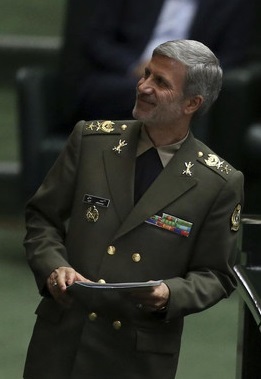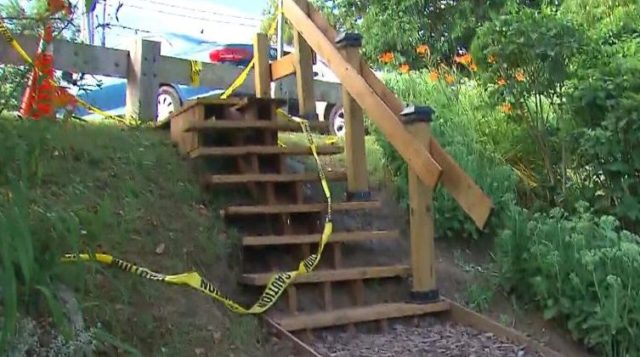Dutch Member of Parliament Geert Wilders was invited to speak at the Ambrosetti Conference in Italy. The purpose of the conference titled “Intelligence on the World, Europe, and Italy” was to “to discuss current issues of major impact for the world economy and society as a whole.”
If anything MP Wilders is an outlier and his remarks show him to be a truth teller among those who wish to ignore the truth about what is truly happening across Europe. As MP Wilders put it:
I appreciate inviting someone who does not share your enthusiasm for the European Union. Whether your European dream, like Euro Commissioner Frans Timmermans, just mentioned it. To be honest: His dream is my nightmare.
MP Wilders made it clear that the biggest issues facing the European Union are:
- The European elite in our midst.
- The mistake of European nations transferring more and more power to the EU.
- [L]egislation has been outsourced to Brussels.
- The lack of a “clear European identity.”
- A EU that “is characterized by cultural relativism and hostility to patriotism.”
- The “bitter fruits” of the EU immigration policy.
- The EU resembling “a cartel of governments dominated by Germany and France.”
- [T]he EU does not care for the preservation of Jewish Christian culture.
MP Wilders warned, “The problems facing Europe are existential. Non-economics, but Islamization, terrorism and mass immigration are our main problems. Existential, indeed, because it determines who we are, what we are and whether we will still exist as a free people in the future.”
Please read MP Wilder’s entire speech. His words are prophetic and sound familiar. His words are much like those of President Trump in that MP Wilders wants to make Holland Great Again.
National sovereignty, secured borders, controlled immigration, draining the swamp in Brussels and dealing with the growing threats to his culture and Judeo/Christian world view.
MP Wilders is one of a handful of leaders willing to speak out in order to save his country. The forces arrayed against him are like the forces arrayed against President Trump. But MP Wilders knows that we shall overcome those obstacles and restore our virtue and dignity as unique Western cultures and societies.
RELATED ARTICLE: Towards A Definition Of Islam And Islamism
Transcript of Speech by Geert Wilders
Ambrosetti Conference, Italy, Villa d’Este, September 2, 2017
Ladies and gentlemen,
Thank you for being here today. I appreciate inviting someone who does not share your enthusiasm for the European Union. Whether your European dream, like Euro Commissioner Frans Timmermans, just mentioned it. To be honest: His dream is my nightmare.
I realize that my opinion differs from that of many members of the European elite in our midst, but I am an optimist.
I believe in a positive future for Europe as a community of independent, sovereign and democratic countries – collaborating without a supranational political union – a Europe without the European Union.
I believe that true democracy can only exist and flourish within a nation state. The national sovereignty combined with the domestic culture gives us our identity. As well as control over our own limits and budget and the right to decide how we use it ourselves as a nation.
Unfortunately, most of our governments have transferred more powers to the EU, which undermines many important things we have achieved over the past centuries.
Our ancestors fought for a democratic Netherlands. That is a Netherlands where Dutch voters and nobody else decide on Dutch matters. Democracy means that a people can decide on his own legislation.
Democracy is equal to self-government. But by the transfer of our powers to Brussels, the EU institutions and other countries decide on matters that are essential to our nation: our immigration policy, our monetary policy, our trade policy and many other issues.
A large part of our legislation has been outsourced to Brussels. Our national parliaments have become EU executive agencies. Many people object to this.
In the 2005 referendum, the Dutch voted against the European constitution, but a few years later, a slightly modified version was pushed under a new name.
Last year, a large majority of the Dutch voted in a referendum against the EU Association Treaty with Ukraine, but the treaty was still pushed. Very few people can still take the EU as a democratic institution after they have seen this happen.
Another very important thing that the Dutch have acquired over the past centuries were clear and demarcated boundaries. Boundaries are important. Because they protect us and determine who and what we are. Due to our governments that have transferred sovereignty, we are now no longer responsible for our immigration policy and even our own borders.
And the result is terrible.
If you give away the keys of your own home to someone who does not lock the doors, do not be surprised when unwelcome guests find their way in. I believe every nation is in charge of its own boundaries and must be able to decide who is welcome and who not. The Netherlands is the home of the Dutch. It’s the only house we have. And we should have control over our borders and our own immigration policy.
One of these things we also attach Dutch is our national identity. The Dutch have their own identity. And so also the other nations of Europe.
But there is no clear European identity.
The EU is characterized by cultural relativism and hostility to patriotism. But patriotism is not a dangerous threat, it’s something to be proud of.
It means defending the sovereignty and independence of the nation states, and not selling these values in slight compromises to the EU and its bureaucrats.
As the Hungarian Prime Minister Viktor Orban said – I quote – “Europe is a community of Christian, free and independent nations. The greatest danger to Europe’s future is the fanatics of internationalism in Brussels. We will not allow them to bitter the fruits of to invoke our cosmopolitan immigration policy. ” End quote.
I totally agree with that.
The European Commission has recently initiated proceedings against Poland, Hungary and the Czech Republic because they refuse to include immigrants. Two years ago, Mrs Merkel invited millions of immigrants to come to Germany.
An historical error. She not only released millions, her policy encouraged them.
Her “Wir buck tie – we can call it” call was one of the biggest suction factors in the European migrant crisis. It is impossible to maintain your identity if you are flooded by millions of newcomers with a completely different culture. A culture that – as is the case with Islamic culture – aims to dominate and refuse[s] to assimilate.
The EU resembles a cartel of governments dominated by Germany and France. These two mighty nations decide almost everything.
But the Poland, the Hungarians, the Dutch, the Italians did not choose Mr Merkel or Mr Macron.
They did not choose Mr Juncker, and we, Dutch, have decimated in the last parliamentary elections of last March, the most pro-EU and pro-ice party in the Netherlands: the social democratic party of my countryman, Mr Timmermans, next to this tomorrow I sit, lost 75% of her seats. My party, the EU’s most anti-EU and anti-icing party, won 33% more seats.
In the 13-party parliament in the Netherlands we are for the first time ever the second party, and next time we will be the biggest.
Another important issue that the Dutch is at heart is our safety. In our streets today, as in many other European cities, we can see daily that the EU and the pro-EU leaders of the national states have saddled us. In our inner cities we are faced with whole neighborhoods that no longer seem to be Dutch, and where Dutch are no longer safe. We have people in our country who are born in our country but who do not share our basic values and it’s even worse.
Parts of Europe even seem to be in war zones. The EU has no war. There have been terrible murderous attacks in Barcelona, London, Manchester, Berlin, Brussels, Nice, Paris, Stockholm, Copenhagen, Madrid, Amsterdam.
Terrorists have entered Europe between immigrant flows that have allowed the EU and national governments. While home grown terrorists are already one of the biggest problems facing our countries today. Thousands of them, throughout Europe, are able to travel freely and wherever they want.
This morning, European anti-terrorism coordinator Gilles de Kerckhove said in a Belgian newspaper that there are now 50,000 radical Muslims in Europe. They can commit a terrorist attack any time, as has happened so often lately.
Brussels, together with the pro-EU leaders in the national capitals, created the conditions that allowed these horrendous events and attacks by allowing millions of immigrants to enter Europe – often uncontrolled, by not requiring assimilation by refusing a ” search culture ‘, a dominant culture, through political correctness and total lack of leadership.
At my office in The Hague is a huge portrait of Sir Winston Churchill. In 1946 he held a speech in which he pleaded for what he called – I quote – “a kind of United States of Europe.” But he did not mean what the Eurofiles mean. He called the British Commonwealth as an example: a loose federation of nations, economically cooperative and bound to a number of principles.
But when he became prime minister in the 50’s, Churchill did not ask for membership of the EU’s forerunner. He found the idea of giving up national sovereignty horrendously. Because he knew that this would lead to the end of democracy, identity and security for his people.
And the EU does not care for the preservation of Jewish Christian culture.
On the contrary, it facilitates Islamization.
Our European civilization, based on the cultural legacy of Jerusalem, Athens and Rome, is the best civilization on earth. It gave us democracy, freedom, equality before the law, the separation of church and state, and the view that sovereign states are there to protect all this. The remedy against all misery and terror is clear: we need to re-emphasize what we are. Only then can we ensure our children a future in a safe, strong and free Europe.
The problems facing Europe are existential. Non-economics, but Islamization, terrorism and mass immigration are our main problems. Existential, indeed, because it determines who we are, what we are and whether we will still exist as a free people in the future.
Ladies and gentlemen,
I believe in freedom of expression. I pay a heavy price for that. I’m on killing lists of Al Qaeda, the Pakistani Taliban and other Islamic groups. I live in a safehouse of the Dutch state and I have been under the 24/7 police protection for 13 years. Everyone is entitled to his or her opinion. I have that too.
And I think Islamization is the biggest threat to our European future. I’m not talking about all Muslims, many of whom are moderate, but I am talking about Islamic ideology that is incompatible with freedom and democracy and we import massively.
The European Commission expresses its concern about the so-called threat to democracy in countries like Poland and Hungary, but it ignores the destructive effect that Islam has on security and freedom of Europe.
For all these reasons – protecting our democracy, our borders, our identity, our security and our freedom – we want a Europe without the EU. Sovereign democratic countries are perfectly able to work together where there are common interests – without the need for a supranational political institution like the EU.
But despite all the bad news, I’m, as I said at the beginning, an optimist. Everywhere in Europe, more and more people become proud patriots.
And know that the patriots will win. And also the nation state.
Nations who are naturally willing to work together where they see a common interest. There is nothing wrong with economic cooperation, on the contrary. We can also work together to fight terrorism. But everything on a voluntary basis, as sovereign nations.
And without a political union. Without the EU.
The future belongs to the Europe of sovereign nations.
Thank you.
































